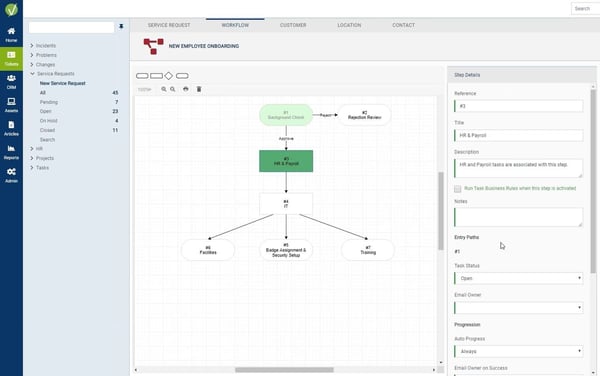DO YOU KNOW HOW TO LEVERAGE YOUR IT METRICS TO GROW YOUR BUSINESS?
In the past, businesses would often depend on generic benchmarks like revenue and cost to measure success. But, in order to survive long-term in today’s markets, businesses are getting smarter. They are finding that they need to be able to capitalize on the deeper business intelligence held within their individual business systems. It’s becoming more and more critical to identify the right growth metrics within your different teams in order to rise above the competition.
One key growth metric that often gets overlooked can be found in your IT support teams. With their help desks, many organizations are failing to harness valuable information at their fingertips that will lead to better working practices, improved efficiency, and ultimately a better future.
EFFECTIVE ITSM REPORTING REQUIRES EFFORT AND DELIVERS PRICELESS INSIGHT
The hidden answer can be found by leveraging the multitude of reporting capabilities held within your organization’s ITSM software. The trick, from the business’s perspective, is to work with the IT department to leverage the valuable information held within your own business systems, rather than accepting reporting information that is readily available ‘off the shelf’.
IT has changed. No longer is it just about ‘kit’, managing systems and ensuring business continuity. In recent years, the traditional helpdesk has transformed into a multi-faceted service desk, offering much more to the business.
IT no longer find themselves simply in demand only when a business decision has been made. In fact, IT now plays a pivotal role in the business decision-making process, driving change through innovation and instilling service management ethos throughout the entire organization.
Nowhere is this truer than the business intelligence capabilities that IT affords, which can be harnessed by business decision-makers to justify an organizational change.
EASY-OPTION REPORTING
Too often organizations do not make the investment in reporting and instead rely on the information that’s readily available to them in standard reports. It’s all too easy, unfortunately, to produce straightforward reports that offer little value.
Even more pertinent is that these types of reports often find themselves on the desks of C-level executives and even become the subsequent focal points of their meetings – offering discussion but delivering nothing. The bottom line being that little is achieved in the way of strategic change with limited reporting.
VALUABLE ITSM REPORTING DELIVERS ACTIONABLE INSIGHTS
It’s ironic, however, because there is a veritable goldmine of information available within ITSM software, specifically in terms of business intelligence, provided your organization can successfully mine and extract it. Moreover, the data itself can sometimes be of little use unless it is correctly interpreted and the right conclusions are drawn.
Whilst every organization is different, there are some key reports that offer valuable business insight:
- SLA and OLA compliance to measure how the business is doing in meeting its contractual SLAs and underlying supporting OLAs
- Number of incidents attributed to different business/organisational units to highlight the source of requests and potential business issues in those areas
- The average cost per ticket to the business
- Number of incidents per service or configuration item to pinpoint trends and underlying issues
- Backlog and Predicated Backlog to measure whether the resourcing within the support team is sufficient
- Benchmarking across different departments using the same ITSM tool to highlight teams adopting best practice and where efficiencies in other teams can be made
- Benchmarking across other companies in the same sector to highlight how the business is doing compared to its peers.
THE RIGHT TOOLS SUPPORT EXISTING BUSINESS OBJECTIVES
It goes without saying that tools are often needed to successfully create custom reports that boost real business value and offer real-time insights. However, these tools should not be cumbersome to operate or represent too large an investment for organizations.
Valuable ITSM reporting should be the cornerstone on which all business decisions are based and, without it, organizations will find themselves making uninformed judgments. It’s their business intelligence analysts, however, that will be breathing the biggest collective sigh of relief. Their core focus is to gain knowledge and insights from meaningful data – quickly, simply and from a system with complete flexibility. How does your ITSM reporting stack up?








